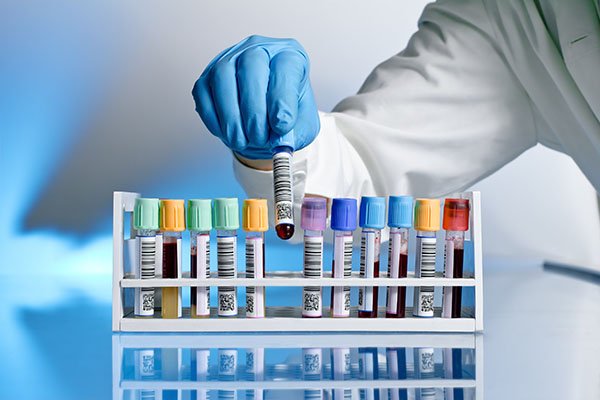Challenges and Lessons Learned in Managing Hospital Supply Chains During the COVID-19 Pandemic
Summary
- Hospitals faced unprecedented demand for critical medical equipment during the Covid-19 pandemic.
- Supply Chain disruptions, shortages, and price gouging posed significant challenges for hospitals in managing their medical equipment inventory.
- The pandemic highlighted the importance of efficient Supply Chain management and the need for better coordination between hospitals, suppliers, and government agencies.
Introduction
The Covid-19 pandemic has put an immense strain on the healthcare system in the United States. Hospitals have faced unprecedented challenges in managing their supply chains for critical medical equipment, such as ventilators, personal protective equipment (PPE), and testing kits. This article will discuss the challenges that hospitals have faced in managing their supply chains for critical medical equipment during the Covid-19 pandemic in the United States.
Increased Demand for Critical Medical Equipment
One of the biggest challenges that hospitals have faced during the Covid-19 pandemic is the increased demand for critical medical equipment. With the surge in Covid-19 cases, hospitals quickly ran out of essential supplies such as ventilators, PPE, and testing kits. This sudden increase in demand put a significant strain on hospitals' supply chains, as they struggled to procure enough equipment to meet the needs of their patients.
Shortages and Stockouts
As the demand for critical medical equipment skyrocketed, hospitals across the country experienced shortages and stockouts. Some hospitals were forced to ration supplies and reuse PPE, putting healthcare workers and patients at risk of infection. The lack of essential equipment also impacted hospitals' ability to provide timely and quality care to Covid-19 patients, leading to increased mortality rates and overwhelmed healthcare facilities.
Price Gouging
Another challenge that hospitals faced during the Covid-19 pandemic was price gouging by suppliers. As demand for critical medical equipment surged, some suppliers took advantage of the situation by inflating prices or selling counterfeit products. Hospitals had to navigate this unregulated market carefully to ensure that they were obtaining quality equipment at fair prices, further complicating their Supply Chain management efforts.
Supply Chain Disruptions
In addition to increased demand and shortages, hospitals also faced Supply Chain disruptions during the Covid-19 pandemic. Lockdowns, travel restrictions, and factory closures in China and other countries disrupted the global Supply Chain, making it difficult for hospitals to procure essential medical equipment. The lack of coordination between suppliers, manufacturers, and government agencies further exacerbated the problem, leading to delays in equipment delivery and distribution.
Logistical Challenges
Logistical challenges also played a significant role in the disruptions to hospitals' supply chains. Limited transportation options, congested ports, and overwhelmed distribution centers made it difficult for hospitals to receive their orders in a timely manner. This lack of visibility and transparency in the Supply Chain made it challenging for hospitals to track their orders and plan for future needs, hindering their ability to respond effectively to the pandemic.
Communication and Collaboration
Effective communication and collaboration between hospitals, suppliers, and government agencies were essential for managing the Supply Chain for critical medical equipment during the Covid-19 pandemic. However, the lack of a coordinated response at the federal level and conflicting guidance from state and local authorities created confusion and hindered hospitals' ability to procure the equipment they needed. Better coordination and communication are needed to ensure that hospitals have access to the critical medical equipment they need to care for patients during a public health crisis.
Lessons Learned and Recommendations
The Covid-19 pandemic has highlighted the importance of efficient Supply Chain management in healthcare. Hospitals must learn from the challenges they faced during the pandemic and take steps to improve their Supply Chain resilience. Some recommendations to enhance Supply Chain management for critical medical equipment include:
- Developing contingency plans for Supply Chain disruptions and shortages
- Investing in technology and automation to improve inventory management
- Strengthening partnerships with suppliers and government agencies to ensure better coordination
- Enhancing transparency and visibility in the Supply Chain to track orders and monitor inventory levels
- Implementing ethical sourcing practices to prevent price gouging and counterfeit products
Conclusion
In conclusion, hospitals in the United States faced significant challenges in managing their supply chains for critical medical equipment during the Covid-19 pandemic. The increased demand, shortages, price gouging, and Supply Chain disruptions highlighted the need for better coordination, communication, and collaboration between hospitals, suppliers, and government agencies. By learning from the challenges faced during the pandemic and implementing the recommendations outlined in this article, hospitals can strengthen their Supply Chain resilience and better prepare for future public health crises.

Disclaimer: The content provided on this blog is for informational purposes only, reflecting the personal opinions and insights of the author(s) on the topics. The information provided should not be used for diagnosing or treating a health problem or disease, and those seeking personal medical advice should consult with a licensed physician. Always seek the advice of your doctor or other qualified health provider regarding a medical condition. Never disregard professional medical advice or delay in seeking it because of something you have read on this website. If you think you may have a medical emergency, call 911 or go to the nearest emergency room immediately. No physician-patient relationship is created by this web site or its use. No contributors to this web site make any representations, express or implied, with respect to the information provided herein or to its use. While we strive to share accurate and up-to-date information, we cannot guarantee the completeness, reliability, or accuracy of the content. The blog may also include links to external websites and resources for the convenience of our readers. Please note that linking to other sites does not imply endorsement of their content, practices, or services by us. Readers should use their discretion and judgment while exploring any external links and resources mentioned on this blog.

